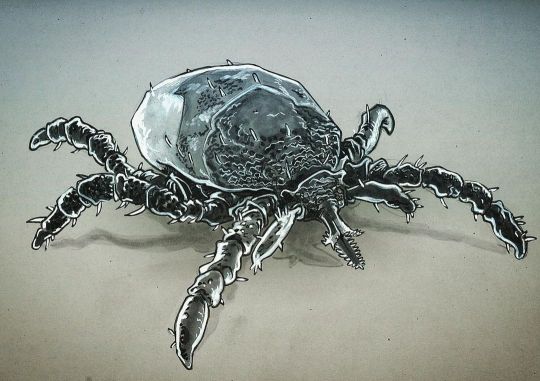#microsopic bugs!!!!!!
Explore tagged Tumblr posts
Text
Posting screenshots from The Raggy Dolls every day until ITV puts it on ITVX: Day 254:

#they are small!!!!#microsopic bugs!!!!!!#also not shown in this screenshot but i think its funny how there are some group shots from this episode without Ragamuffin in them#like they straight up forgot to draw him in some scenes#man... he was neglected even back in the 90s#the raggy dolls#back to front#princess#hi-fi#lucy#dotty#sad sack#claude#ragamuffin
2 notes
·
View notes
Text
baseball is such an addictive sport for someone like me
like, first they got me with the intrigue that comes with a two-way player in Shohei Ohtani- what does it mean? why is it so impressive? and why does this guy have such a sweet swing and smooth slide for such a big dude?
speaking of sweet swings and smooth slides, they got me with Trea Turner hook line and sinker. also his running technique is so cool to watch- you can tell he was a track athlete for sure lol (it doesn't hurt that I think he's pre cute lol)
BUT it doesn't end there! do you know how many stats there are in baseball? a stupid large amount. like, a SHIRTLOAD of stats. hell, most of our examples in my performance analysis unit in my sport science degree were from baseball because those folks are under the microsope y'all.
which is to say that I can literally analyse my favourite players like bugs which is taking fixation to a whole 'nother level for me. because not only can I appreciate them as players and people, but I can also appreciate them from a performance perspective because I have a background in sport science and an eye for that sort of thing.
anyways, baseball is a silly sport (affectionate) and I must begrudgingly admit that I kinda love it lol
#day says hey#this is your friendly warning that there will be more baseball rants to come lol#baseball#baseball with day
0 notes
Photo










The Spectacle of Nature: Robert Hooke’s Micrographia
One of the most groundbreaking books in the formation of Western science is English polymath Robert Hooke’s Micrographia, printed in 1665 by John Martyn and James Allestry, printers to the Royal Society. It is considered to be the first major work on microscopy, the practice of using microscopes to view objects that would otherwise be invisible to the naked eye. There were new advancements in lenses during the 17th century which led to the development of optical instruments like telescopes and microscopes. The book was extremely popular and influential during Hooke’s life and continues to be through the present day.
Robert Hooke (1635-1703) was a founding member of The Royal Society, a British academic institution dedicated to the advancement of scientific knowledge. In 1662, Hooke was appointed “Curator of Experiments” to the Royal Society. Hooke was involved in many scientific debates during his day, and most notably accused his rival Isaac Newton of plagiarism. Hooke asserted that he was the first to publish the discovery of the inverse square law of gravitational attraction which was a theoretical cornerstone of Newton’s Principia Mathematica (which we hold at UW-Milwaukee Special Collections). While the scientific community sided with Newton, Hooke can still be credited with a number of mathematical and mechanical inventions, including Hooke’s Law, an equation that describes elasticity.
The book we are highlighting today is Robert Hooke’s Micrographia: or Some Physiological Descriptions of Minute Bodies Made by Magnifying Glasses. With Observations and Inquiries Thereupon. It contains thirty-eight copperplate engravings based on Hooke’s own drawings from his observations made using a microscope. The illustrations range from detailed drawings of a flea, the eyes of a fly, blue mold, diamonds, ice crystals, and other minute specimens Hooke saw through a microscope. The book also includes astronomical observations of stars and moons made through use of a telescope.
Micrographia perfectly represents the spirit of the series “The Spectacle of Nature” because there is a true sense of wonderment in the illustrations. It is easy to imagine how dazzling it would be to see something new in nature, like the structure of a fly’s eye, which had previously been invisible to the naked eye. Many of the illustrations fold out to be more than twice the size of the book, which only adds to the spectacular display.
I saw Micrographia in person at UW-Madison's Special Collections. Unfortunately, we do not have it here at UW-Milwaukee Special Collections, but we do have several microscopy books by Antonie van Leeuwenhoek who was greatly inspired by Hooke.
There are several digitized copies of Micrographia online, including from the Biodiversity Heritage Library. There is an online version presented by the Royal Society that mimics the experience of flipping through the pages of Micrographia.
View more posts in The Spectacle of Nature series!
–Sarah, Special Collections Senior Graduate Intern
#The Spectacle of Nature#Science Saturday#Robert Hooke#Micrographia#The Royal Society#John Martyn#James Allestry#Antonie van Leeuwenhoek#microscopy#microbiology#microsopes#microscipe#History of Science#scientific illustrations#bugs#insects#engravings#17th century#magnifying glass#UW-Madison Special Collections#fold out plates#Sarah Finn#sarah
88 notes
·
View notes
Photo

#tick #inktober2021tick #inktober2021 #inktoberallyearlong #bug #microsopic #sketchbook #inkdrawing #instart #instartist #catchingup https://www.instagram.com/p/CVF3G6Ml5ac/?utm_medium=tumblr
#tick#inktober2021tick#inktober2021#inktoberallyearlong#bug#microsopic#sketchbook#inkdrawing#instart#instartist#catchingup
2 notes
·
View notes